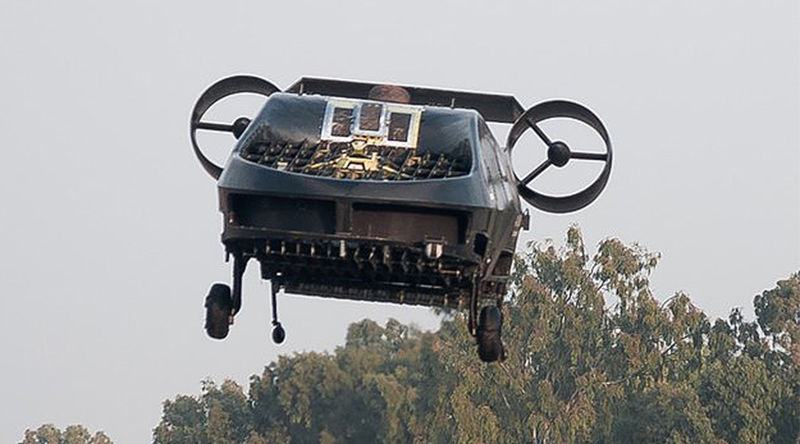SHARE
Flying Vehicles will Take Over the Skies in the Near Future
With the rise of science fiction books, tv shows, and movies, driving flying vehicles was an extremely appealing wishful thought for fans of this genre. Even more exciting was the idea of a driverless flying car, an autonomous vehicle that takes you anywhere you want without the hassle of driving (cool, right?). Films and documentaries showed these predictions in car-chasing scenes and the like, but time has proven that they were too optimistic.
But do not let yourself be discouraged: continuous innovation is going after that goal and every day we get one step closer. Some time ago, auto-driven cars started to be studied, and nowadays it seems that in the near future they will be a reality. Many companies such as Tesla, Uber, or Google are focusing on this trend.
Nevertheless, some new trends are arising following that dream that was shown in films and documentaries. Everything started with the Maglev (Magnetic Levitation) technology, used mainly in trains. However, this technology has proven to be too expensive and its development has temporarily come to a halt. After the wide development of drones in recent years, it seems that the dream of flying vehicles is closer than ever.
These new technologies will give you a glance at the coming future:

 These are two of the projects that already have a prototype, but there are also many other companies such as Uber (see video), eVolo and Joby Aviation that are planning to launch their own flying vehicles within the next 5 years.
We have seen that this new trend has great potential, but do you really think we will have these flying vehicles in the near future? Take a look at this article on the use of drones for logistics and supply chain.
Join us to help leading companies go to the next level
These are two of the projects that already have a prototype, but there are also many other companies such as Uber (see video), eVolo and Joby Aviation that are planning to launch their own flying vehicles within the next 5 years.
We have seen that this new trend has great potential, but do you really think we will have these flying vehicles in the near future? Take a look at this article on the use of drones for logistics and supply chain.
Join us to help leading companies go to the next level
- Flying motorbike: Not long ago, it was thought that a drone would never be able to transport people. However, the Budapest based company ByeGravity decided to work on this and ended up building a three-rotor drone called Flike, which is able to move one person with a weight up to 100 kg with a speed of up to 100 km/h. They faced two main challenges at the beginning of the project: how to transform the pilot movements into a code for the six existing engines that move the motorbike and how to increase the duration of the available batteries (able to supply the six existing electric motors for only 10 minutes). Therefore, they installed a small petrol engine that can start working when the batteries are running out of power in order to charge it and extend the autonomy for longer than one hour, resulting in a hybrid way to move. Finally, they are facing another issue, obtaining all the permits from the America FAA (Federal Aviation Administration) and the EASA (European Aviation Safety Agency) is not that simple, what means that Flike will never fly over 30 m to avoid entering restricted airspace. All things considered, Flike is predicted to be definitely launched in 2017.

- Cormorant: This new product from the company Urban Aeronautics is a self-driven air vehicle that uses internal lift rotors that enable it to fly inside obstructed terrain such as mountains or cities, where helicopter are unable to operate. Its most important use is military purposes and especially emergency actions, although it could even be used as a taxi in big cities. This could look too fanciful but it is already a reality. This month the company was able to make the first real flight for two minutes. Predictions state that this product will be available in 2021 at the latest.
 These are two of the projects that already have a prototype, but there are also many other companies such as Uber (see video), eVolo and Joby Aviation that are planning to launch their own flying vehicles within the next 5 years.
We have seen that this new trend has great potential, but do you really think we will have these flying vehicles in the near future? Take a look at this article on the use of drones for logistics and supply chain.
Join us to help leading companies go to the next level
These are two of the projects that already have a prototype, but there are also many other companies such as Uber (see video), eVolo and Joby Aviation that are planning to launch their own flying vehicles within the next 5 years.
We have seen that this new trend has great potential, but do you really think we will have these flying vehicles in the near future? Take a look at this article on the use of drones for logistics and supply chain.
Join us to help leading companies go to the next level 